This is a preprint.
ACE2 utilization of HKU25 clade MERS-related coronaviruses with broad geographic distribution
- PMID: 40162213
- PMCID: PMC11952669
- DOI: 10.21203/rs.3.rs-6097445/v1
ACE2 utilization of HKU25 clade MERS-related coronaviruses with broad geographic distribution
Abstract
Dipeptidyl peptidase-4 (DPP4) is a well-established receptor for several MERS-related coronaviruses (MERSr-CoVs) isolated from humans, camels, pangolins, and bats 1-6. However, the receptor usage of many genetically diverse bat MERSr-CoVs with broad geographical distributions remains poorly understood. Recent studies have identified angiotensin-converting enzyme 2 (ACE2) as an entry receptor for multiple merbecovirus clades. Here, using viral antigen and pseudovirus-based functional assays, we demonstrate that several bat merbecoviruses from the HKU25 clade previously thought to utilize DPP4 7, employ ACE2 as their functional receptor. Cryo-electron microscopy analysis revealed that HsItaly2011 and VsCoV-a7 recognize ACE2 with a binding mode sharing similarity with that of HKU5 but involving remodeled interfaces and distinct ortholog selectivity, suggesting a common evolutionary origin of ACE2 utilization for these two clades of viruses. EjCoV-3, a strain closely related to the DPP4-using MERSr-CoV BtCoV-422, exhibited relatively broad ACE2 ortholog tropism and could utilize human ACE2 albeit suboptimally. Despite differences in entry mechanisms and spike proteolytic activation compared to MERS-CoV, these viruses remain sensitive to several broadly neutralizing antibodies and entry inhibitors. These findings redefine our understanding of the evolution of receptor usage among MERSr-CoVs and highlight the versatility of ACE2 as a functional receptor for diverse coronaviruses.
Keywords: ACE2; Cryo-EM; DPP4; EjCoV-3; HKU25; MERSr-CoV; Receptor.
Conflict of interest statement
Declaration of interests The authors declare no competing interests.
Figures



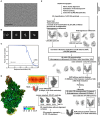
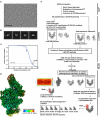

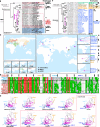
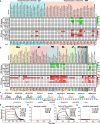
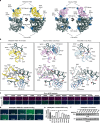

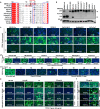

Similar articles
-
ACE2 utilization of HKU25 clade MERS-related coronaviruses with broad geographic distribution.bioRxiv [Preprint]. 2025 Feb 19:2025.02.19.639017. doi: 10.1101/2025.02.19.639017. bioRxiv. 2025. PMID: 40027745 Free PMC article. Preprint.
-
ACE2 from Pipistrellus abramus bats is a receptor for HKU5 coronaviruses.bioRxiv [Preprint]. 2024 Aug 16:2024.03.13.584892. doi: 10.1101/2024.03.13.584892. bioRxiv. 2024. Update in: Nat Commun. 2025 May 28;16(1):4932. doi: 10.1038/s41467-025-60286-3. PMID: 38559009 Free PMC article. Updated. Preprint.
-
Bat-infecting merbecovirus HKU5-CoV lineage 2 can use human ACE2 as a cell entry receptor.Cell. 2025 Mar 20;188(6):1729-1742.e16. doi: 10.1016/j.cell.2025.01.042. Epub 2025 Feb 18. Cell. 2025. PMID: 39970913
-
ACE2-using merbecoviruses: Further evidence of convergent evolution of ACE2 recognition by NeoCoV and other MERS-CoV related viruses.Cell Insight. 2024 Jan 30;3(1):100145. doi: 10.1016/j.cellin.2023.100145. eCollection 2024 Feb. Cell Insight. 2024. PMID: 38476250 Free PMC article. Review.
-
Single domain antibodies derived from ancient animals as broadly neutralizing agents for SARS-CoV-2 and other coronaviruses.Biomed Eng Adv. 2022 Dec;4:100054. doi: 10.1016/j.bea.2022.100054. Epub 2022 Sep 18. Biomed Eng Adv. 2022. PMID: 36158162 Free PMC article. Review.
References
Publication types
Grants and funding
LinkOut - more resources
Full Text Sources
Miscellaneous

